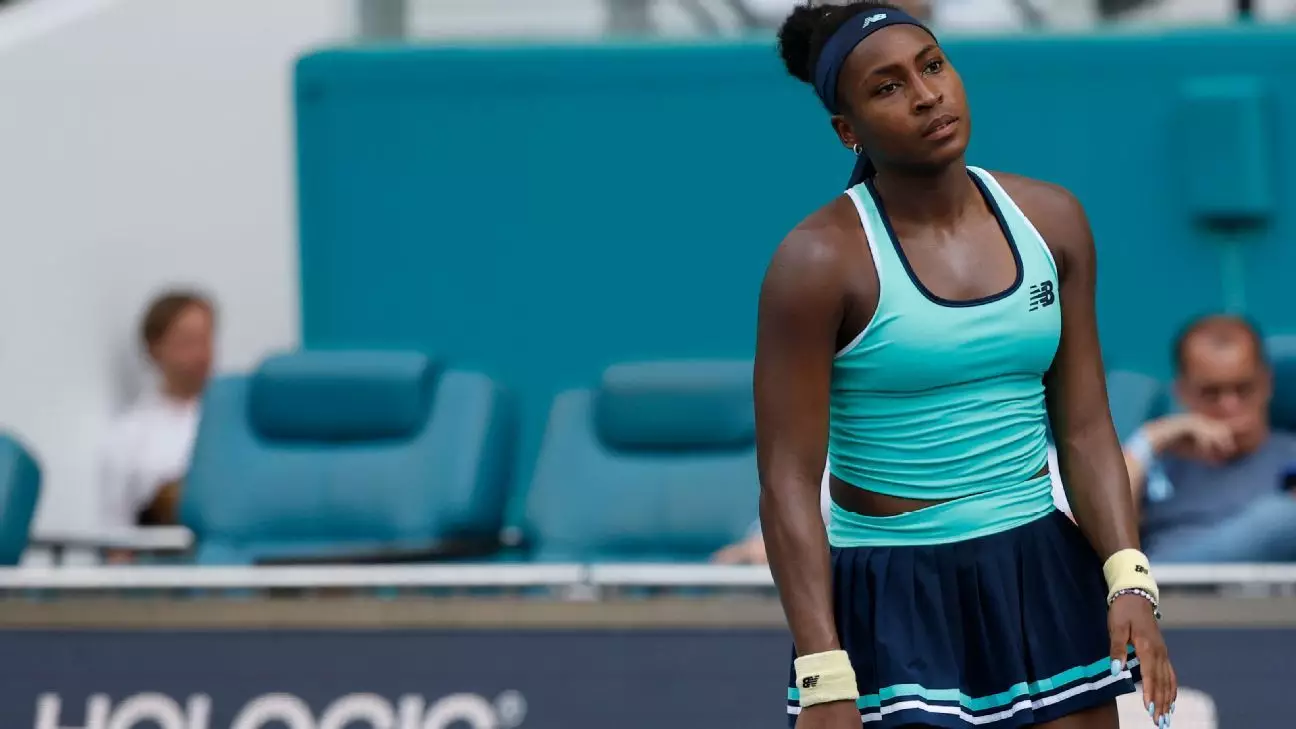In what can best be described as a shocking outcome, Coco Gauff, the No. 3 seed in the Miami Open, suffered a surprising defeat to unseeded Magda Linette. The match concluded with a score of 6-4, 6-4, denying Gauff a place in the quarterfinals and sending ripples of disbelief through the South Florida crowd. As a rising star in American tennis, Gauff is accustomed to the pressure of expectations, yet on this particular day, she faltered when it mattered most. Her serving woes were apparent, exemplified by 12 double-faults and a measly 50% success rate on first serves. The South Florida crowd, usually a source of inspiration, couldn’t alter the trajectory of Gauff’s performance as the unforced errors piled up, burdening her game further against a determined Linette.
Magda Linette’s victory stands as a testament to her resilience and strategic play. In maintaining pressure on Gauff’s serve, Linette employed a tactical approach designed to exploit the young American’s vulnerabilities. The moment Gauff seemed to gather momentum by taking a lead in the second set, Linette’s resolve shone through compellingly. It was a classic case of experience and mental fortitude overcoming the raw talent of a younger player, leading Linette to her first win over a top-three opponent in almost two years. Her victory is not merely statistical; it has emotional and psychological weight that could boost her confidence as she moves forward in the tournament.
The Downfall of Defending Champion Collins and the Disappointment of American Tennis
Coco Gauff’s exit was not an isolated incident but part of a disheartening trend for American women at the Miami Open. Defending champion Danielle Collins fell victim to the formidable Aryna Sabalenka, while Amanda Anisimova and Ashlyn Krueger also faced defeats, ending their hopes in straight sets. Sabalenka, the top seed and current world No. 1, exhibited a commanding performance against Collins that demonstrated both strength and precision, amassing an impressive 23 winners during her match. This raises critical questions about the future of American women’s tennis: are we witnessing a generation struggling under the weight of expectations, or are they simply encountering superior talent on the international stage?
It’s undeniable that American tennis has been steeped in glory over several decades, but the current climate leaves much to be desired. The underwhelming performances in this tournament highlight the competitive landscape’s evolution, where established players meet fierce new challengers who are breaking barriers and reshaping expectations. The trend is especially pronounced among young American players who are finding it increasingly difficult to channel their talent into consistent performances amid pressure.
Emerging Talent and a Bright Future
On a more positive note, 22-year-old Emma Raducanu demonstrated a dazzling performance against Amanda Anisimova, marking off an impressive victory that showcased her resilience and skill. For Raducanu, who notoriously rose to fame with her US Open triumph, this victory in the Miami Open marks her first Masters 1000 quarterfinal. Such critical milestones reveal that despite the setbacks faced by veterans, emerging talent is consistently breaking through. The matchup against Jessica Pegula promises to be a highly anticipated encounter as both players seek to establish themselves among the elite.
Raducanu’s attitude reflects a mature understanding of the challenge ahead. Her assessment of the upcoming match against Pegula underscores the fierce competition she respects and acknowledges within the women’s tennis circuit. The confidence she exudes is not just about winning a match; it is emblematic of a growing maturity in her game—a thing that bodes well for more competitive rivalries to develop.
The Broader Context of Women’s Tennis
The Miami Open serves as more than just a platform for individual triumphs; it places the intense competitive dynamics of women’s tennis in the spotlight. With each match, the underlying narrative deepens, revealing the tireless resurgence of seasoned competitors and emerging talent alike.
The performances in this tournament reiterate one pivotal truth in women’s tennis: the competition is more unpredictable than ever. Players like Aryna Sabalenka and Iga Swiatek are solidifying their foundational prowess, while others like Linette and Raducanu are poised to disrupt the hierarchies previously established. As the Miami Open continues, fans and analysts alike will be watching how these games unfold and what they portend for the future landscape of women’s tennis. The tournament is not only a reflection of skill; it carries with it layers of emotion, drama, and potential that keep fans on the edge of their seats.

